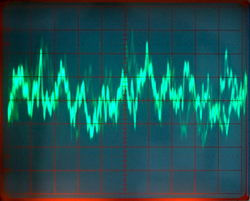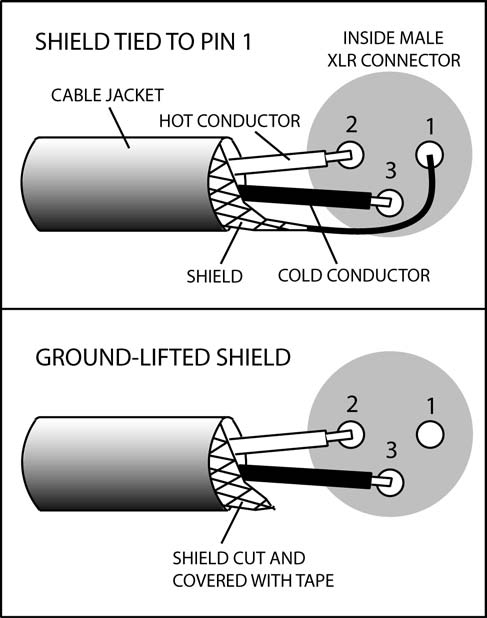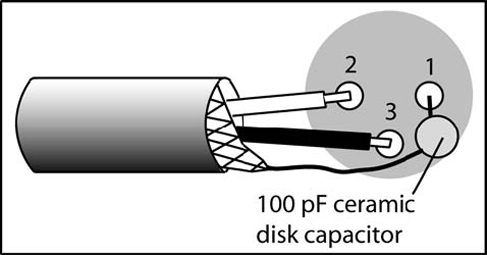
Ground Loops
Another major cause of hum is a ground loop: a circuit made of ground wires.
It can occur when two pieces of equipment are connected to the building’s safety ground through their power cords, and also are connected to each other through a cable shield (Figure 3).
The ground voltage may be slightly different at each piece of equipment, so a 50- or 60-Hz hum signal flows between the components along the cable shield. It becomes audible as hum.
Also, the cable shield/safety ground loops acts like a big antenna, picking up radiated hum fields from power wiring. For example, suppose your mixer’s power cord is plugged into a nearby AC outlet.
The musicians amps are plugged into outlets on stage. So the mixer and amps are probably fed by two different circuit breakers at two different ground voltages.
When you connect an audio cable between the mixer and power amps, you create a ground loop and hear hum. To prevent ground loops, plug all audio equipment into outlet strips powered by the same breaker. (Make sure the breaker can handle the current requirements).
Run a thick AC extension cord from the stage outlets to the mixer, and plug the mixer’s power cord into that extension cord. That way, the separated equipment chassis will tend to be at the same ground voltage—there will be very little voltage difference between chassis to generate a hum signal in the shield.
Caution: Some people try to prevent ground loops by putting a 3-to-2 safety ground lifter on the AC power cords. Never Do That. It creates a serious safety hazard.
If the chassis of a component becomes accidentally shorted to a hot conductor in its power cord, and someone touches that chassis, the AC current will flow through that person rather than to the safety ground. Lift the shield in the receiving end of the signal cable instead, and plug all equipment into 3-pin grounded AC outlets.
Let’s explain the signal ground lift in more detail. The hum current in a ground loop flows in the audio cable shield, and can induce a hum signal in the signal conductors.
You can cut the audio cable shield at one end to stop the flow of hum current. The shield is still grounded at the other end of the cable, and the signal still flows through the two audio leads inside the cable.
So, to break up a ground loop, disconnect the cable shield from pin 1 in line-level balanced cables at the male XLR end (Figure 4). You can either cut the shield, or plug in an inline audio cable ground-lift adapter.
Removing the shield connection at one end of the audio cable makes the connection sensitive to radio-frequency interference (RFI). So solder a 100 pF capacitor between the shield and XLR pin 1 (Figure 5). This effectively shorts RFI to ground, but is an open circuit for hum frequencies.
Some engineers create a partial ground lift by placing a 100 ohm resistor between the cable shield and male XLR pin 1 (Figure 6. next page). This limits the current passing through the cable shield but still provides a good ground connection.
Label the XLR connector “GND LIFT” so you don’t use the cable where it’s not needed. For example, mic cables must have the shield tied to pin 1 on both ends of the cable. The ground lift is only for line-level cables.
Here’s another way to prevent a ground loop when connecting two balanced or unbalanced devices. Connect between them a 1:1 isolation transformer or hum eliminator.



